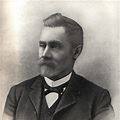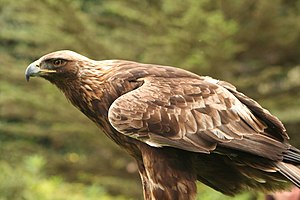Glenveagh National Park is in the Derryveagh Mountains in County Donegal. It was established in 1984 as the third of the six National Parks of the Republic of Ireland.
Understand

History
The Great Glen Fault cracked across Highland Scotland and Donegal when continents collided and scraped past each other 400 million years ago. Those continents later separated, forming the Atlantic, and the fault line continues in Newfoundland and the Gulf of St Lawrence. The lateral slippage is about 100 km and, although its great disruptions have ended, minor earth tremors still occur. The Donegal section is called the Leannan Fault, slicing through the granite Derryveagh Mountains. This was a line of weakness for glaciers to grind and carve away at, creating the U-shaped Glenveagh. The last Ice Age (the "Devensian") about 25,000 years ago covered all of Ireland and most of Great Britain in a single ice sheet. Donegal was its last redoubt, ice-clad until 14,000 years ago, and inhospitable tundra for another 3000 years. The area then warmed rapidly and became cloaked in a forest of conifer then deciduous trees, especially oak which in Irish is doire. Early settlers found a poor soil for farming but they had many uses for oak, chopping and sawing away to build houses in Doire, anglicised as "Derry".
Modern agriculture and industry developed across Ireland from the 17th century but had little effect on Donegal. People drifted away from the land even in the good years, then came the Great Famine from 1847. Those that could fled, those that couldn't perished. The landowners mostly survived but were bankrupted. Opportunity! - all across Ireland and Scotland there were estates going cheap, which could be made profitable through sheep farming, forestry, hunting and tourism. One such opportunist was "Black Jack" John George Adair (1823-1885) from Laois. Already rich from North American land speculation, from 1857 he bought several small "distressed" estates which he combined to form Glenveagh. Now it only remained to clear away the unwanted peasant population and build a grand mock-castle to rival Balmoral. He was soon in conflict with his tenants, who murdered his steward. Right! - so if that's their game! Black Jack earned his soubriquet over two bleak days in April 1861, when 85 tenants and their 159 children were evicted and their homes destroyed. Many of them were later assisted by charity to emigrate to Australia, but others languished in the workhouse. It's not clear how many died.

Glenveagh Castle was built from 1870 to 1873 in baronial style, a cod-medieval four-storey rectangular keep. Adair meanwhile continued his interests in America, where he married a wealthy widow Cornelia Wadsworth Ritchie, and he established the JA Ranch in the Texas panhandle. He was a blundering huntsman, once blasting his own horse instead of a buffalo, but he was a role model for hundreds of wannabe Prince Alberts and fish-shooting Dundrearies of that era. He died in 1885 and is buried at Rathdaire near Portlaoise, but his wife continued to develop the estate for hunting. Cornelia was remembered as a kind and generous person; she died in 1921 during the "Troubles". The castle then nearly joined the many mansions torched by nationalists, but a bunch of anti-Treaty IRA occupants were chased out by Irish government forces, who used the place as a garrison for three years.
The next owner from 1929 was Arthur Kingsley Porter, of Harvard, an Indiana Jones-like dashing archaeologist. In 1933 he disappeared from Inishbofin, the little island off the nearby north coast. Given his reputation this was bigged-up as a mystery, but "it was a dark and stormy night" and he obviously drowned. The last private owner, from 1937, was Henry Plummer McIlhenny of Philadelphia, whose family were from Donegal; he's best known for his fabulous art collection. He sold much of the estate to the Irish government in 1975 to enable the creation of a National Park. In 1981 he made a gift of the castle itself and its gardens, and the park has been added to since by further purchases.
Landscape

The core of the park is the glen of Lough Beagh or Veagh, draining southwest to northeast. The lake is 6.5 km long by 0.8 km wide and at low altitude, 45 m. The U-shaped valley rises steeply on both sides and is flanked to the south by the similar valley of Loughs Gartan and Akibbon, beyond the park boundary. The Derryveagh mountains here rise to 300 m and continue southwest, with the highest peak Errigal (751 m) also beyond the park. So nowhere is very high, but it's enough at this latitude to make a difference to the climate and scenery. The attraction of the park, to the likes of Adair and to modern visitors, is not its extremes but its contrasts, with the castle and its genteel gardens set abruptly against the crags. The park consists of nearly 170 sq km (65 sq miles) of mountains, lakes, glens, woods and heath. Several areas beyond it enjoy similar protection, such as Lough Barra Bog.
Flora and fauna
The park is home to a large herd of red deer, which spend summer on the high ground then move down in cold or stormy weather. They chomp the young growth, so some parts of the wood are fenced off to protect trees, ferns and moss.
Always keep a lookout for eagles, though sightings are not common. The most frequently encountered bird on the uplands is the Meadow Pipit, with Stonechats, Grouse, Ravens and occasional Peregrines and Merlins. Woodland birds include Siskins, Treecreepers, Wood Warblers and Crossbills. The peat bogs to the west support Curlew and Dunlin and migratory geese.
Climate
It's never extreme, but it can be wet and cold even at the height of summer, and mist and fog can descend very quickly.
Get in
The park is 24 km northwest of Letterkenny. Follow N56 north to Termon then R255 west, signed for Dunlewey and the park, to come onto R251.
Local Link Bus 271 runs from Letterkenny to Churchill and the 1 park entrance (40 min), and continues to Dunlewey, Crolly, Loughanure, Dungloe and Burtonport to meet the Arranmore ferry. There are three buses M-Th and five F Sa.
Fees and permits
There is no charge to enter the park, or for car-parking, or for the gardens; see above for bus.
The castle is visited by guided tour, closed in 2021. Admission is adult €7, conc €5.
You can also pay €7 for a guided tour of the garden or a guided walk.
Get around
Cars are not allowed beyond the Visitor Centre and car park (which has an EV charge point). From there to the castle is 3.5 km so a 40 min walk would do it.
A shuttle bus runs to the Castle, buy tickets from the Visitor Centre, adult €3 return. In 2021 this is running with greatly reduced capacity.
A walkers' bus runs past the castle to the head of the glen, leaving the Centre at 10:00 Sa Su year-round. It's €3 single.
See

- 1 Glenveagh Castle, ☏ +353 76 100 2537. The castle itself remains closed in 2021.
- The Gardens are next to the castle, open all year dawn to dusk, admission free. The Pleasure Garden and the Walled Garden were laid out in the 1880s and successive owners further embellished the estate. There are now over 11 hectares of informal gardens of different themes. Come in May / June for rhododendrons or in August for best colour in the Walled Garden. Autumn colours are dramatic once the nights grow cold.
- The viewpoint is reached by a path starting 200 m before the castle, zigzagging up the hill then along the ridge.
- The Golden Eagle (Aquila chrysaetos) is the park's signature beast. They were hunted to extinction in Ireland by 1912, but reintroduced into the park in 2001. It took until 2007 for the first native-born eagle to hatch and take flight. As of 2021 none are confirmed as nesting in the park, but they are being seen elsewhere in Ireland, ranging over great distances, maybe 30 birds in total. A minimum viable population is reckoned to be 60 eagles so they remain "red-listed" but it looks as though they're becoming established. Both sexes are dark brown but paler than other raptors, especially on the nape, and they are silent. They are distinctly large and hungry birds, as the rabbits know to their cost.
Do
- The park suggests some half-a-dozen walking trails, which are way-marked.
- There are no watersports on the lough, head for Dunlewey in Gweedore.
- Fishing on the lough is by boat, no bank fishing allowed. The season is 15 July to 30 Sept and you need to buy a permit. There are brown and sea-trout and the occasional salmon.
Eat

- Synge & Bryne tearooms at the park entrance are open daily April-Oct 09:30-17:00 then Sa Su Nov-March. In late 2021 they only do take-away.
- Spill the Beans is a mobile coffee shop in the layby 500 m south of the entrance. It's open April-Oct F-Su 10:00-17:00.
- Glenveagh restaurant and tearooms at the castle are open April-Sept daily 10:00-17:00. In 2021 the restaurant is closed but the tearooms are open for takeaway.
Sleep
There is no camping allowed within the park.
Connect
As of Sept 2021, there is only a patchy mobile signal in this area. Vodafone covers the highway R251 and up the valley to the castle, Three only covers the highway, and you'll be lucky to get any signal from Eir.
Go next
- R251 west from the park entrance takes you to Dunlewey, Gweedore and the west coast.
- R256 northwest off R251 heads for the north coast around Falcarragh.
- Southeast on R251 sets you on the road to Letterkenny.


